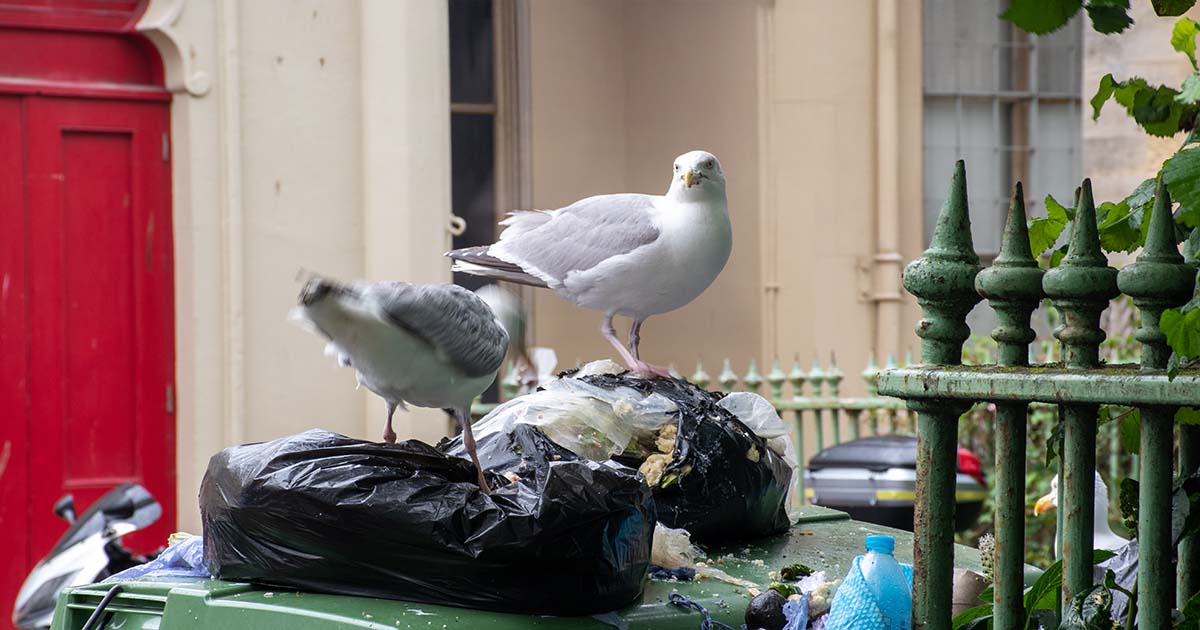Brighton Fly-Tipping Statistics, Facts & Figures 2025

As a busy coastal city with a high number of new residents and visitors every year, Brighton faces unique pressures when it comes to waste management. From old furniture left on pavements to rubbish piling up around communal bins, fly-tipping is a visible and ongoing concern in the city.
So, exactly how much waste is fly-tipped annually in Brighton? And what’s being done to prevent it? In this article, we explore Brighton’s latest fly-tipping figures — including where incidents are happening, what types of waste are being dumped, and the actions being taken to tackle the problem.
How many fly-tipping incidents are reported in Brighton each year?
According to the latest government data:
- In the year ending March 2024, 1,688 fly-tipping incidents were reported by Brighton & Hove Council.
- This equates to six incidents per 1,000 people, far below the national average of 20 per 1,000.
- This is a 17% decrease from the year before (ending March 2023), when 2,032 incidents were recorded.
- The number of fly-tipping incidents in Brighton & Hove has fluctuated over the past decade, but the overall trend has been downward.
- The highest figure on record was in 2014-15, with 4,187 fly-tipping incidents.
- Since then, fly-tipping levels have remained relatively steady, ranging between 1,500 and 2,500 incidents each year.
The graph below shows the number of fly-tipping incidents in Brighton in the last ten years (with a gap in the data for 2015-2016).
How do Brighton’s fly-tipping statistics compare to other areas in the South East?
With decreasing levels of fly-tipping across the city every year, how does Brighton compare to other areas in the region? Recent government data shows that:
- Of the 70 local authorities in the South East, Brighton & Hove recorded the 15th highest number of fly-tipping incidents in the year ending March 2024, with 1,688 reports.
- To put this into context, it is placed ahead of Folkestone and Hythe with 1,644 reports and behind Windsor and Maidenhead with 1,902 fly-tipping incidents.
- Southampton recorded the most incidents this year, with nearly 11,000 reports – almost seven times more than Brighton.
- Nearby councils — Adur, Mid Sussex, and Lewes — reported far fewer fly-tipping incidents than Brighton, with 601, 572, and 397 cases respectively.
Where does fly-tipping occur most in Brighton & Hove?
As a busy, vibrant city and popular tourist destination, where is fly-tipping happening most across Brighton and Hove? Is it more common near homes or in non-residential areas? The data shows:
- The majority (71%) of fly-tipping incidents in Brighton & Hove take place on public highways, with 1,204 reports in the year ending March 2024.
- This is followed by footpaths and bridleways, which saw 291 incidents (17%).
- Council-owned land, such as parks and play areas, accounted for 97 reports (6%).
- According to our analysis on data from FixMyStreet, fly tipping occurs most near litter bins, in public parks, in car parks and on pavements.
What type of waste is most commonly fly-tipped in Brighton?
Now that we know where fly-tipping is happening, what kind of items are being dumped in Brighton? A government report found that:
- Household waste was by far the most frequently fly-tipped material, with 938 incidents reported in the year ending March 2024, making up more than half (56%) of all cases.
- Unidentified or uncategorised waste was the second most common type, with 229 incidents (6% of all cases).
- Construction waste, including concrete, bricks, plasterboard and leftover debris from building and demolition work, accounted for 120 incidents (7%).
- White goods, like fridges and washing machines, accounted for 96 incidents (6%).
Can you be fined for fly-tipping in Brighton?
Fly-tipping in the UK is considered a criminal offence. Under UK law, the most serious cases of fly-tipping can also lead to up to five years in prison.
According to Brighton & Hove Council, offenders can receive an unlimited fine, meaning there is no legal maximum on how much courts can charge.
- In the year ending March 2024, 941 fixed penalty notices were issued for fly-tipping in Brighton, meaning 56% of incidents resulted in a fine.
- This was the highest number of fly-tipping fines issued by any council in the South East.
- The New Forest recorded the second highest number of fines and had the highest fine rate, with 71% of incidents leading to a penalty.
The table below shows the South East local authorities with the highest percentage of fly-tipping incidents that resulted in a fixed penalty:
| Rank | Local Authority | Rate of Penalty |
|---|---|---|
| 1. | New Forest | 71% |
| 2. | Brighton and Hove | 56% |
| 3. | Reading | 26% |
| 4. | Folkestone and Hythe | 24% |
| 5. | Fareham | 16% |
| 6. | Epsom and Ewell | 8% |
| 7. | Horsham | 7% |
| 8. | Spelthorne | 5% |
| 9. | Dartford | 4% |
| 10. | Vale of White Horse | 4% |
What is being done to tackle fly-tipping in Brighton?
Alongside issuing a high number of fines to tackle fly tipping across the city, Brighton & Hove Council is also taking action to ensure illegal dumping is minimised, encouraging residents to report any fly tipping cases in their local area. Waste dumped on council-owned land is typically cleared within two working days.
In May 2024, the council also announced that communal mixed recycling bins would now be emptied seven days a week, up from five. Daily collections are expected to reduce rubbish left beside bins, helping to keep streets cleaner and create a more pleasant environment for residents and visitors.
While these measures are a step in the right direction, some residents and businesses may still face challenges when it comes to disposing of bulky or excess waste, and that’s where HIPPO can help.
Our Brighton rubbish removal service offers fast, sustainable waste disposal for homes and businesses, diverting as much as possible from landfill. Whether you're clearing white goods, furniture or garden waste, our friendly team is here to assist.

